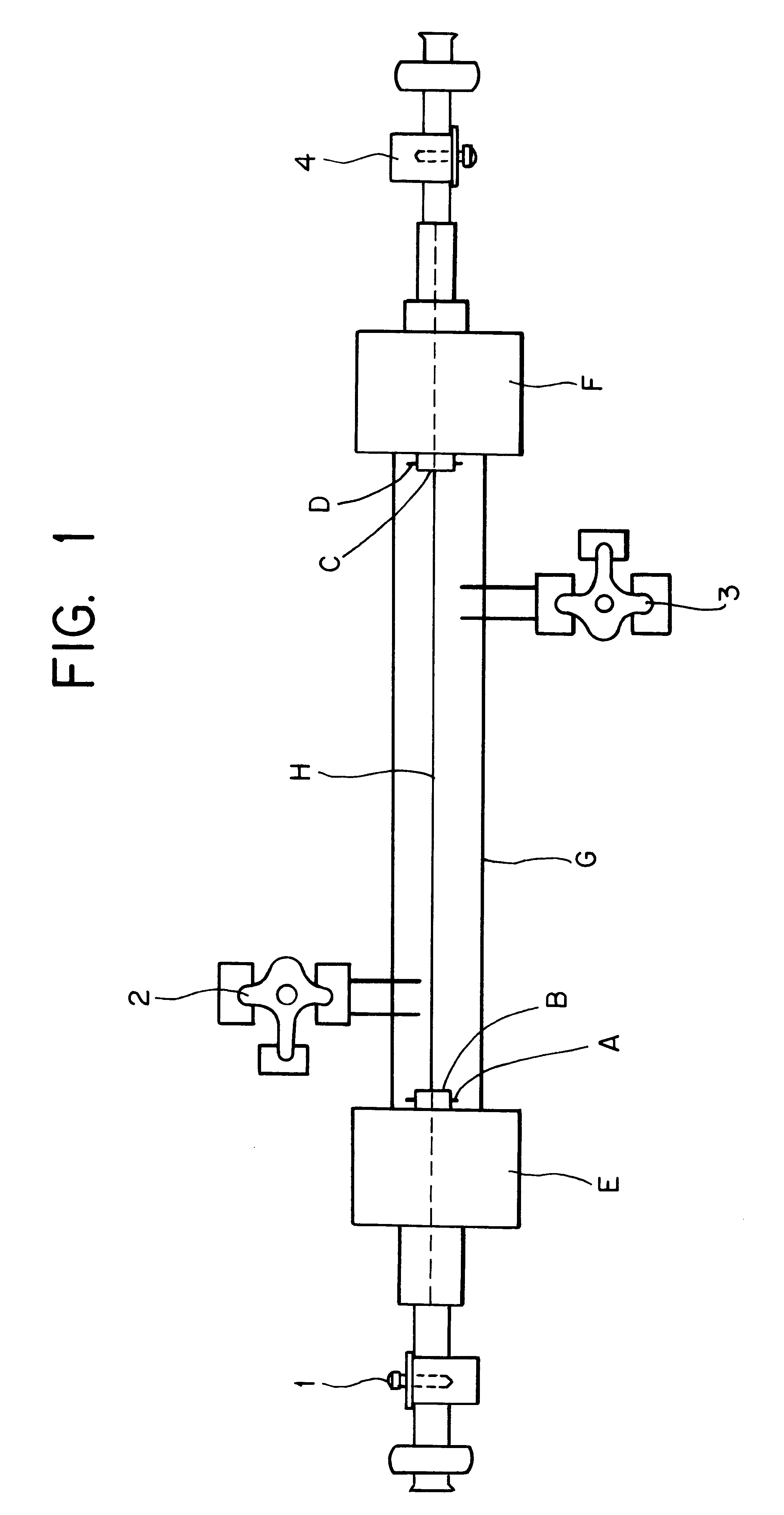Tissue equivalents
- Summary
- Abstract
- Description
- Claims
- Application Information
AI Technical Summary
Benefits of technology
Problems solved by technology
Method used
Image
Examples
Embodiment Construction
The following description relates to a preferred method of creating a tubular vessel equivalent. The apparatus of FIG. 1 is currently being employed--but many variations could be made by one of ordinary skill in the art to the basic design without departing from the invention. This example creates a craft which will not delaminate.
The dimensions of the apparatus vary depending on the diameter and length of graft required. The apparatus should be made of a material which can be sterilised without becoming opaque. The apparatus consists of a Perspex.TM. chamber G sealed at its ends by blocks E & F, presently made from Delrin.TM.. The central mandrel H may be of any non-toxic non-degradable material--for very small diameters a non-absorbable suture may be used but it must not adhere to the gel. It is a temporary support for the graft. The 3-way taps 1, 2, 3 and 4 are of medical grade.
Once the apparatus has been sterilised block F is unscrewed and a suitable length of polyester tube of ...
PUM
| Property | Measurement | Unit |
|---|---|---|
| Time | aaaaa | aaaaa |
| Length | aaaaa | aaaaa |
| Time | aaaaa | aaaaa |
Abstract
Description
Claims
Application Information
 Login to View More
Login to View More - R&D
- Intellectual Property
- Life Sciences
- Materials
- Tech Scout
- Unparalleled Data Quality
- Higher Quality Content
- 60% Fewer Hallucinations
Browse by: Latest US Patents, China's latest patents, Technical Efficacy Thesaurus, Application Domain, Technology Topic, Popular Technical Reports.
© 2025 PatSnap. All rights reserved.Legal|Privacy policy|Modern Slavery Act Transparency Statement|Sitemap|About US| Contact US: help@patsnap.com

